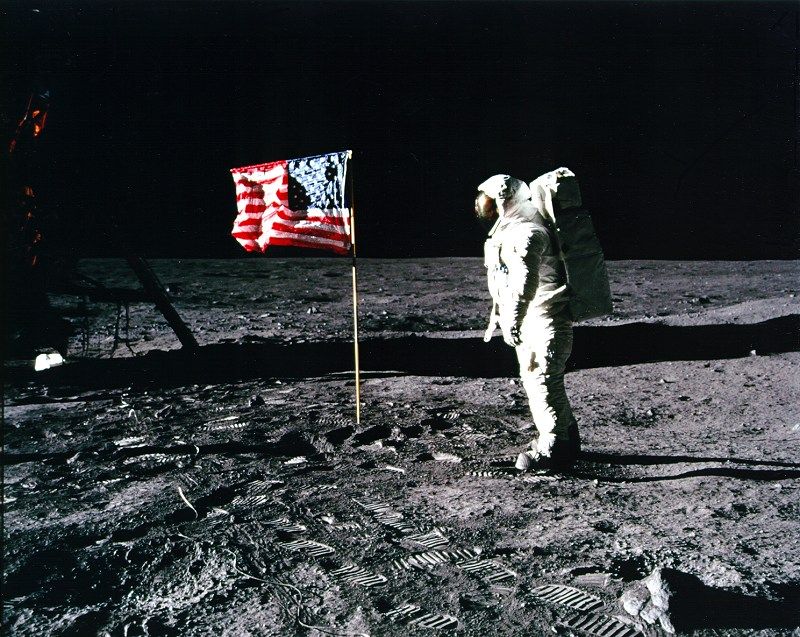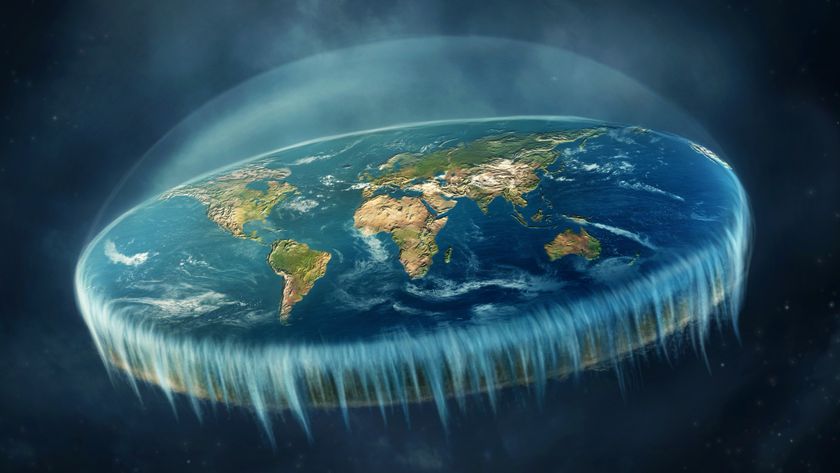How to Tell If Conspiracy Theories Are Real: Here's the Math

A faked moon landing or a hidden cure for cancer are just a couple of large-scale conspiracies that, if true, would have come to light within five years following their alleged cover-ups, according to a mathematical formula put together by one physicist.
David Robert Grimes, a postdoctoral research associate at the University of Oxford who studies cancer, is familiar with conspiracy theorists. His mainstream writing for the likes of The Guardian and BBC News has included controversial topics that lend themselves to conspiracy theories, including homosexuality, climate change and water fluoridation.
"The charge that there is a scientific conspiracy afoot is a common one," said Grimes, in an email interview with Live Science, "and almost inevitably those making these charges will descend into accusing one of shilling or being an agent of some malignant entity." In response to his work, conspiracy theorists have threatened him, even tried to get him removed from his academic position. These interactions made Grimes curious about why conspiracies have such a strong hold on so many people, and the chances that they might be true. [Top 10 Conspiracy Theories Explained]
For this new study, Grimes considered four common conspiracy beliefs: that NASA faked the 1969 moon landing during the Apollo 11 mission, that human-caused climate change isn't real, that vaccines are unsafe, and that pharmaceutical companies are hiding cancer cures from the public. He created an equation to figure out how long these four cover-ups would likely last (if indeed they were cover-ups), given how many people are involved, the likelihood of leaks from the inside (whether on purpose or by accident), and how much upkeep would be required to keep everything under wraps.
To estimate the chances that any one person would reveal secret activities, Grimes looked at three actual leaked conspiracies: the National Security Agency's surveillance program, which was brought to light in 2013 by NSA contractor Edward Snowden; the Tuskegee syphilis experiment, in which a then-new treatment of penicillin was withheld from infected participants in the experiment, finally exposed by Peter Buxtun in 1972 ; and the pseudoscientific forensic tests of the Federal Bureau of Investigation that resulted in innocent men being held or even executed for crimes they didn't commit. It took six years, 25 years and six years for the three conspiracies to be exposed, respectively. With those numbers, he found the odds of a conspiracy-ending leak, whether accidental or deliberate, could be as low as around 4 in 1 million. [The Reality of Climate Change: 10 Myths Busted]
Grimes then calculated the potential success of the four conspiracies that continue to garner support. He used the best-case scenario for the conspirators, where the fewest number of people are involved who could leak such undercover machinations. The moon landing had an advantage over the other three scenarios because it could've potentially occurred without having to bring in new conspirators to preserve the hoax — this means the only people who are keeping secrets die off over time. Using peak NASA employment numbers from 1965 (411,000 people), and allowing for the fact that those involved would eventually die, the moon hoax still lasts less than four years, according to Grimes' calculations. In the end, Grimes finds that if any more than 650 people were involved in creating the moon hoax and keeping it a secret, the cat would be out of the bag.
Using the same equation but modifying it to consider the need for added conspirators, the "lie" of climate change would last nearly 27 years if only scientists were involved in the cover-up, but under four years if scientific bodies were to take part. The vaccination conspiracy makes it to almost 35 years if it's confined to the Centers for Disease Control and Prevention and the World Health Organization, but is revealed in three years and two months if drug companies are co-conspirators. The suppression of a cancer cure — maintained by Novartis, Pfizer, Roche, Sanofi, Merck and Co., Johnson and Johnson, GlaxoSmithKline and AstraZeneca — fails after around three years and three months as well.
Sign up for the Live Science daily newsletter now
Get the world’s most fascinating discoveries delivered straight to your inbox.
Although he seems to be talking directly to the conspiracy-minded with this piece, Grimes is not idealistic about its impact.
"I think true believers will never change their views; in the words of Leon Festinger, 'A man with a conviction is a hard man to change,'" he said. "While these people are ideologically deeply invested in a given narrative, I would hope that this paper might help the more rational people who have maybe heard some claims and want to ascertain if they're probable or not."
His main concern is the myths and conspiracies that could cause serious harm, such as climate change doubters and the anti-vaccination movement. As more people forgo vaccinations for their kids, so-called herd immunity — in which large numbers of people with immunity from a disease can shield smalls numbers of people who are not immune because outbreaks are unlikely — collapses. With this work Grimes is attempting to chip away at the less confident conspiracists and move them toward more science-based beliefs.
Follow Live Science@livescience, Facebook & Google+. Original article on Live Science.












